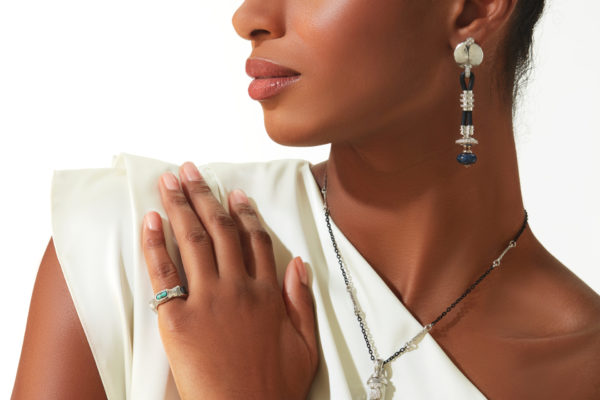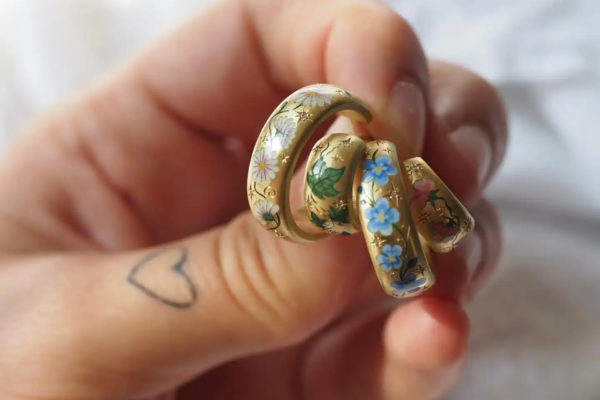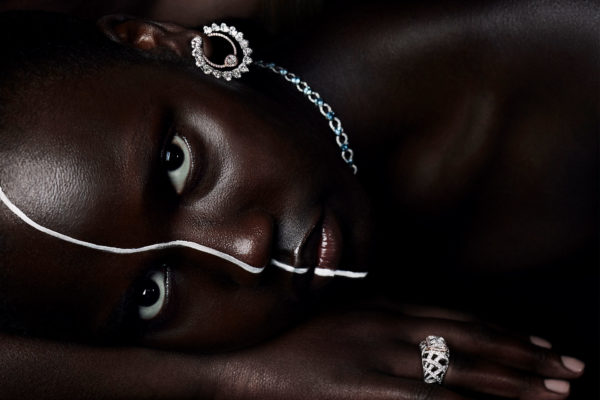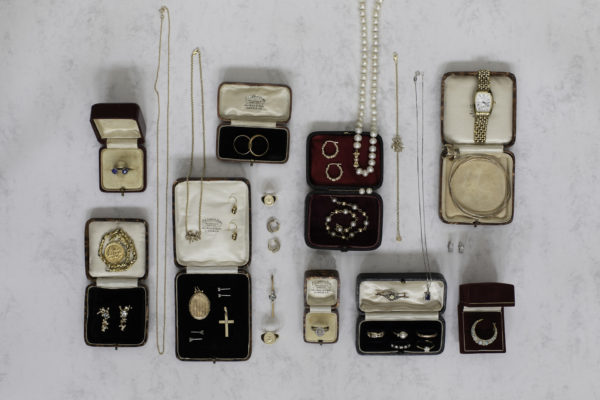Jewellery Collecting Is The New Hobby Of The Art Collector Crowds
By
1 year ago
Jewellery is merging with the art world

The art world have perfected, well, the ‘art’ of collection. But have they cottoned onto the aesthetic pieces floating around in the jewellery world? As a generation of jewellers cross the line between craft and art to produce wearables fit for exhibition, you might be interested in starting a jewellery collection. Melanie Grant sums up the market – and gives you the lowdown on who you need to know for a jewellery collection that’ll hold value.
Starting A Jewellery Collection 101
Forget The Home Gallery – It’s All About Jewellery
Over the last couple of decades, world-class museums, auction houses and art fairs have cautiously welcomed jewellery (at the pinnacle) into their selective embraces. Jewellery, which once languished as a decorative art near the bottom of an unspoken hierarchy, has now taken flight. ‘What greater validation than TEFAF [The European Fine Art Fair]?’ asks Christian Hemmerle, fourth-generation family member, displaying at TEFAF in 2022. ‘The gap is closing. People are not categorising anymore. There is now great design and not great design.’
Jewellers such as Hemmerle, Taffin, Bhagat and Vamgard have made their way into the ‘legitimate’ art world; displaying at the TEFAF is a big deal. In 2022, when I went, a resplendent flower installation, akin to a modern-day Hanging Gardens of Babylon, transfixed all who entered this world-renowned art fair. It places them side by side with artists of all disciplines, from old masters to contemporary jewellery-makers. This installation was one by master jeweller Hemmerle, comprising of bejewelled blooms made up of anodised aluminium, bronze and bisque porcelain.
Forget a quick online order for haute jewellery collecting, though. As in the art world, many of these jewellery artists are hard to buy from and some are reclusive, making only a handful of pieces annually. Wallace Chan makes 15 to 20 unique pieces a year from his base in Hong Kong and if you appear unannounced at Joel Arthur Rosenthal’s (known as JAR) Paris atelier, his door remains firmly closed. It’s all about access. Specialist dealers and galleries create a relationship between the world’s greatest jewellers and their congregation. ‘We are frustrated collectors,’ says Sophie Jackson, director of Symbolic & Chase, a London-based gallery that recently began offering the work of acclaimed sculptor and goldsmith Daniel Brush. ‘The expansion of the fine art market has had a huge effect on jewellery.’ Now that one can buy Jacqueline Rabun via The Carpenter’s Workshop, wearable sculpture by the likes of Frank Stella and Ai Weiwei at The Elisabetta Cipriani Gallery and Theodoros at Symbolic & Chase, jewellery is truly merging with the art world, and collectors now need to think like gallerists.
None of these jewellers are making products to be sold as a commodity. They create, without compromise, for themselves. This isn’t the sole preserve of independent designers, though. Push past the more commercial collections of some of the bigger houses such as Buccellati, Dior and Chanel and an array of art emerges. Boucheron is a rare example of a heritage brand that consistently combines independent artistic thought with global sales, giving its creative director Claire Choisne free rein. Many others choose to collaborate with fine artists to create that biting point between art and commerce – famously, Piaget worked with Salvador Dalí in the 1960s, Tiffany with a number of artists, most recently Daniel Arsham, but the division separating fine and jewellery artist in terms of respect and desirability is increasingly less relevant. A more democratic time is upon us so if you can feel the force, it is art no matter who makes it.
Who’s Buying Who – And For How Much?
The market bears all this out. At Sotheby’s, the category of Jewellery now sits in third place behind Contemporary Art and Impressionist & Modern Art, and ahead of Old Masters and Chinese Art in terms of value. Jewellery sales at the auction house grew by a staggering 42 percent globally to $440.5M in 2021. The most popular global houses for Sotheby’s by volume are Cartier, Van Cleef & Arpels and Bulgari, and by value Harry Winston, Cartier and Bulgari. The top independents by value are Hemmerle, Reza and JAR.
This colossal appetite for jewellery collecting of bejewelled masterpieces has been fuelled partly by the pandemic driving online sales ever higher but also by younger buyers, with 30 percent of jewellery collectors at Sotheby’s now under forty. Asian buyers now account for nearly half of all jewellery sales. An art-jewellery sandwich is now on the menu. ‘In terms of collectability we talk about rarity, provenance, quality and condition. All the same value points we use to evaluate art are applied now to jewellery,’ says Frank Everett, Senior Vice President of Jewellery at Sotheby’s. He cites the historic 42-lot sale in 2017 of Shaun Leane’s designs, originally made for Alexander McQueen, as a milestone moment when two aluminium corsets were sold as sculptures for $711,000-$807,000 respectively.
In the East, where much of this growth is coming from, the stubborn notion of intrinsic value still holds firm. Stones like The De Beers Blue, a 15.10-carat fancy vivid blue diamond that sold recently in Hong Kong for $57.5 million at Sotheby’s still captivates the market but there is a new generation of designers worth collecting, too. In India Studio Renn mixes concrete with diamonds, in Hong Kong Nicholas Lieou creates almost invisible necklaces from rock crystal and the Lebanese designer Dina Kamal, with her baguette-tipped cuffs in smooth beige gold, represents a new type of modernism.
Artist jewellers of African descent – such as Jariet Oloyé who uses twisted gold wire and frosted glass, or those who mint their own gold coin jewellery in the case of Sewit Sium – show us that our appreciation of art itself is finally expanding beyond aristocratic European men. Art, after all, is about challenging the status quo. The Hanging Gardens of Babylon did just that in Iraq during the sixth century BCE, as one of the rumoured seven wonders of the world. They represented a gateway to a city known for its culture and learning. That metaphor made me smile as I marvelled at the jewellery treasures of TEFAF. The best of jewellery has finally come of age and art is all the richer for it.
Want To Begin Jewellery Collecting? Here Are Some Names To Know
Featured image: A piece from Hemmerle’s ‘Infused Jewels’ Collection. hemmerle.com











